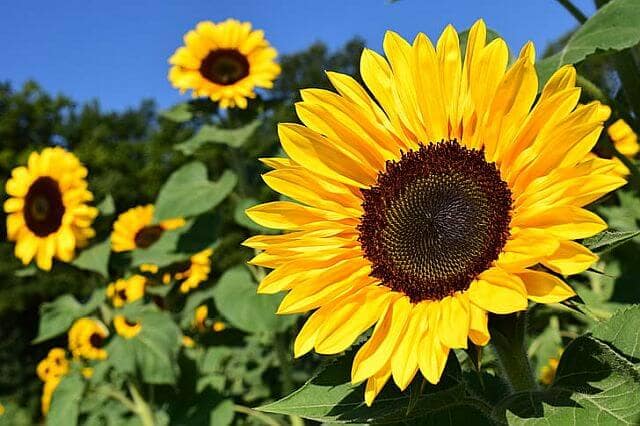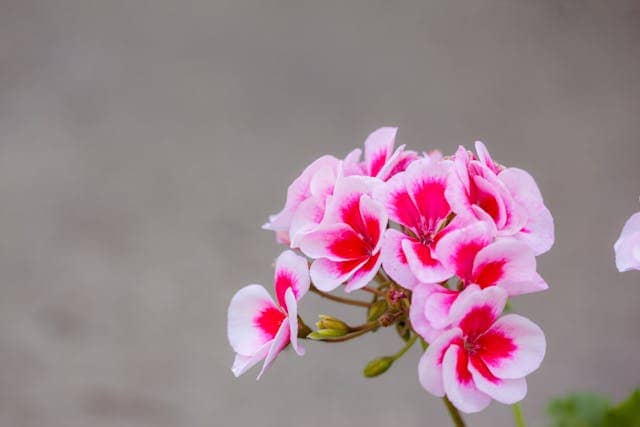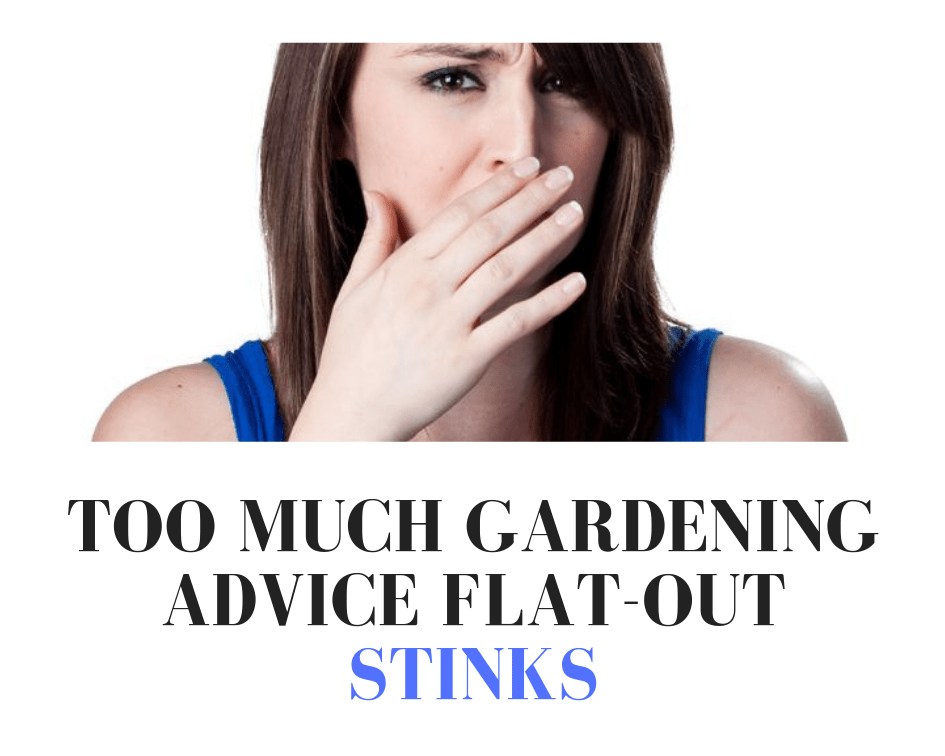This post may contain affiliate links. As an Amazon Associate we earn from qualifying purchases.
Gardening terms: If you’re new to gardening, get ready to learn what may feel like a whole new language.
It’s sort of like trying to get a sip of water out of an open fire hydrant. Often, what they learn is from social media gardening groups and it’s just plain wrong.
So, today, we present our great-big glossary of some common gardening terms and what they truly mean.
Time to get garden smart!

Acidic soil
Soil with a pH lower than 7.0.
Adventitious root
Roots that grow from unusual places, like from stems or leaves instead of the base of a plant.
Aerobic
Needing air, especially oxygen, to survive.
Air layering
A way to grow a new plant by wrapping a stem that is still connected to the mother plant in soil and keeping it moist until roots grow.
Alkaline soil
If your soil has a pH higher than 7.0, it is said to be alkaline.
Allelopathy
When one plant releases chemicals that stop other plants from growing nearby. Allelopathic plants include:
- Some weeds
- Black walnut tree
- Sunflowers
- Goldenrod
Anaerobic
Not needing air, especially oxygen, to survive.
 Annual plants
Annual plants
These guys live only one season, from planting until post-bloom. Many of these may drop seed and “volunteer” the following season. Examples include:
- Zinnia (Mine volunteered for another season!)
- Impatiens
- Pelargonium (depending on species. Some are perennial)
- Calibrachoa
- Petunia
Apical bud
See terminal bud
Apical Dominance
When the top part of a plant (the tip) grows more than the side parts, making the plant taller. If the bud is removed, the branch or stem loses its dominance and those lower down begin to grow, making the plant or tree bushier. Check out the full explanation by reading Apical Dominance: Gardening Terms Demystified
Auxin
See rooting hormone
Axil
That area between where a leaf grows from the stem and the stem itself.
Balled and burlap
Often referred to as “b&b,” it describes a method of moving a tree with soil still attached to the roots, which are wrapped in damp burlap. Sort of the opposite of a bareroot tree.

Beneficials
This term applies to insects who benefit the garden either by pollinating plants or consuming “bad” insects. For more information, check out 7 Good Garden Bugs (with photos!)and Bad Garden Pests (with photos!) and How to Get Rid of Them
Biennial plants
Plants that live two years. The first year is a root and foliage-producing time period. Blooms follow in the second year. Examples of biennial plants include:
- Hollyhocks
- Onions
- Black-eyed Susan
- Sweet William
- Forget-Me-Not
Bio-pesticide/fungicide
Biopesticides/fungicides are those that are made from animals, plants, bacteria and, sometimes, minerals. Bacillus thurengiensis (Bt) is an example of a bio pesticide.
Bolt or bolting
This term applies to vegetable and herb crops. It describes a plant that goes to seed earlier than it should, typically due to weather extremes or photoperiodism.
Blossom End Rot
Often referred to as BER, it refers to a physiological problem wherein a tomato or pepper plant cannot take up the calcium in the soil. This can be caused by extreme temperatures, inconsistent watering, excessive nitrogen in the soil or root damage.
Bt
Short for Bacillus thuringiensis, a bacterium included in many bio-pesticides. There are more than 20 named sub-species at this writing. Examples include:
- israelensis (Typically labeled as Bti, it targest mosquito and fungus gnat larvae)
- kurstaki (Packaging typically refers to kurstaki as Btk. It targets caterpillars, such as cabbage looper and tomato hornworm)
Bulb
True bulbs have a flat bottom and a pointed top. They are typically round in shape. Onions are true bulbs. Some others include:
- Amaryllis
- Daffodil
- Tulip
- Hyacinth

Chlorosis
A foliar condition in which the leaves turn yellow from lack of the proper nutrients.
Complete fertilizer
Used to describe a fertilizer that has the same amount of nitrogen, phosphate (phosphorous and potash (potassium). Careful, it’s not “complete” in that it’s all you need. Another fertilizer’s ratio could quite possibly be more “complete,” depending on your soil’s needs.
Compost
Decayed plant material used to improve soil.
Corm
Corms may look like bulbs but they lack the layers of a bulb; they have a solid interior. Popular plants that grow from corms include:
- Freesia
- Crocus
- Water chestnuts
- Gladiolus
Cultivar
This is actually short for “cultivated variety,” which means it was bred by humans. Some however are hybrids. Unlike a variety (see below), cultivars that come from seed don’t come true to the parent plant. “They can only be propagated by cuttings, grafting or tissue culture,” according to the experts at PennState Extension.
You will know a plant is a cultivar when you find the name following the genus and species, set apart by single quotation marks. Here’s an example: Solanum tuberosum ‘King Edward’ is what is known as the “cultivar epithet” for the King Edward potato.
Damping off
A fungal disease of seedlings, This is typically caused by overly moist soil and a lack of air movement around the seedling. The main symptom is when you see the seedling keel over and die. Learn more Gardening Terms for Beginning Seed Starters here on Gardenologist.
Deadhead
Nope, it’s not a bunch of gardeners who jump in their vans and follow Grateful Dead around the country. This is the process of removing spent flowers. If you don’t do this, the flower will go to seed and “trick” the plant into producing additional flowers. See the entry for “self-cleaning” for more information.

Deciduous plants
This term includes those plants that lose their foliage in the winter. Examples of deciduous trees include:
- Peach tree
- Birch
- Maple
- Ash
- Ginkgo biloba
Dioecious plants
A dioecious plant bears only a male or only female flowers. The opposite is monoecious, when the plant has both female and male flowers.
Dormant
In the plant world, dormant means that the plant is alive but not growing and remains inactive for a period of time.
Drip line
This is the area at the very tips of the outer branches of a tree or shrub or stems of a plant.
Evergreen plants
These plants maintain their foliage year-long.
F1 Hybrid
When two purebred plants are bred, the first resulting offspring is an F1 hybrid. Examples include the ‘Early Girl’ tomato and Mega Bloom® vinca.
F2 Hybrid
The result of crossing two F1 plants.

Foliar feeding
The definition of this is pretty evident: fertilizing a plant by spraying the product on the plant’s foliage.
Full shade
Minimal direct sun, less than four hours per day.
Full sun
Six or more hours of sunlight per day, some of it in the afternoon.
Girdling root
A root that grows in a circular pattern around the trunk of a tree. They will gradually choke the tree, cutting off the flow of sap. This is often caused by burying the root flare when the tree is planted.
Graft union
The knob or bump on a plant that indicates where it was grafted.
Grafting
A propagation technique wherein one plant is joined to another. This is accomplished by placing “… a portion of one plant (bud or scion) into or on a stem, root, or branch of another,” known as the stock “…in such a way that a union will be formed and the partners will continue to grow,” according to Britannica.com.
Harden off
The process of allowing new plants to acclimate to the environment in or around your home before transplanting into pots or in-ground. A gradual process wherein over the course of a week or two, the plant is gradually introduced to more hours of sunlight.
 Hardy
Hardy
This is another term that confuses new gardeners. Yes, the dictionary defines a “hardy” person as one who is “… capable of enduring difficult conditions.”
When it comes to plants, however, it describes a plant that can tolerate winter temperatures and conditions. Being able to tolerate heat or neglect doesn’t mean the plant is hardy.
Head back
Trimming the ends of branches to encourage bushier growth.
Hybrid
When you cross-pollinate two plants, the resulting seed will be a hybrid.
Lateral branch
A branch that branches off from the main stem.
Micro nutrients
The seven essential elements needed by plants in small amounts for growth. These include:
- boron
- chlorine
- copper
- iron
- manganese
- molybdenum
- zinc
Monoecious
A plant that bears both male and female flowers
Mycorrhizae
Beneficial fungi that live on plant roots and help plants absorb nutrients.

Node
Areas along a plant’s stem that contain buds. When pruning, you want to cut just above a node. When taking cuttings, cut just below.
Need a visual? For pruning, check out “How to Prune Shrubs,” and for taking cuttings, take a look at the diagram in “Let’s Propagate Roses.”
NPK
The three main nutrients plants need: Nitrogen (N), phosphate (popularly known as phosphorus) (P), and potash (popularly known as potassium) (K). You’ll typically find this analysis on a bag or bottle of fertilizer
Partial shade
Four hours of direct sun per day.
Partial sun
Six hours of direct sun each day
Perennial
A perennial plant lives more than one year, unlike an annual that completes its life, from seed to death, in one year. Examples include:
- Roses
- Clematis
- Shasta daisy
- Hosta
Petiole
The stalk that connects a leaf to the plant stem.
pH
A measurement of the amount of lime (calcium) in the soil.

Photoperiodism
This is a fascinating topic if you’re a plant nerd. I dove deep into it years ago. Photoperiodism describes how a plant (or animal, by the way) responds to the changes in day length. Some types of bougainvillea, for instance, won’t bloom until the days get shorter (aka short day plants).
Propagation
When you start new plants, from seed, air layering, cuttings, tissue culture or grafting, you are propagating the mother plant.
Rhizome
These guys grow horizontally and send out side shoots from the main root and from the “eyes” located across the top and sides of the rhizome. Plants that grow from rhizomes include:
- Canna lily
- Bamboo
- Ginger
- Iris
- Turmeric
Root flare
A tree’s root flare is the area on the lower trunk where the first roots are attached. When planting a tree, it is critical that the root flare is exposed.
Rooting hormone
Often called “auxin,” rooting hormone aids in the initiation of roots. Auxins can be natural, such as Indole Acetic Acid (IAA) or synthetic, such as Indolebutyric acid (IBA) or napthaleneacetic acid (NAA).
Self-cleaning
This term refers to plants that need no deadheading, such as some roses, or don’t require pruning, such as certain palms that drop dead leaves on their own.
Side-dress
A method of fertilization that helps protect the plant’s roots from fertilizer burn. It involves digging a trench, about 6 inches deep, along the side of a row of vegetable plants (or others), sprinkling the fertilizer into the trench, covering it and then watering.

Soil
If you are planting in it, it’s soil. Not dirt. Using the word dirt when you mean soil instantly pegs you as a novice. Plus, it’s inaccurate; dirt and soil are two different things. Nobody plants in dirt. Please, I beg you, stop calling it dirt.
Sport
A sport is a genetic mutation. We’ll use a rose as an example. You have a gorgeous red rose. All of a sudden it throws a bloom that is white with red streaks. That’s a sport. This can happen to leaves and fruit as well as flowers. In fact, many popular fruits are sports (nectarine, red Anjou pear, the Ruby Red grapefruit, and the ‘Pink Lemonade’ lemon, according to Wikipedia.)
Systemic
You will usually encounter this word when dealing with pesticides. It simply means that the product is used as a soil drench, taken up by the plant and transported throughout.
Terminal bud
The bud located at the tip of a shoot. Also known as apical bud.
Top dressing
Adding a layer of compost or soil or other material on top of the soil without working it into the soil.
Transplant shock
This may occur shortly after transplant. The plant begins to decline, weeping, losing leaves, etc. To learn more, check out our blog post How to Avoid Transplant Shock and What to do if it Happens.
Tuber
Like corms, tubers also have eyes that will produce buds. Also like corms, they have underground stems which act as the main storage organ. Popular plants that grow from tubers include:
- Yam (not sweet potato. That grows from a tuberous root)
- Begonia
- ZZ plant
- Potato
- Caladium
Tuberous root
Picture a sweet potato and you’ve pictured a tuberous root. “Botanically, tuberous roots differ from true tubers because tubers are modified stem tissue,” according to the experts at the University of Florida IFAS Extension.
USDA Hardiness Zones
Compiled by the United States Department of Agriculture, hardiness zones are determined by the coldest temperature a plant can tolerate. Use your ZIP Code to find your hardiness zone right here on Gardenologist.org.
Variety
This one gets thrown around a lot. A variety is a plant whose offspring will be the same as the parent plant. The experts at Penn State Extension use the pink-flowering dogwood as an example of a variety. “… seedlings of the pink flowering dogwood will also be pink-flowering.” You will know a plant is a variety if you see “var” in its name. For instance, Cornus florida var. rubra is the aforementioned dogwood.




